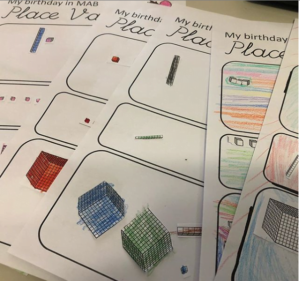I have been asked by lots of teachers what they should buy or must have in their classroom as they set up for the new school year or a new contract. So many are worried about getting a Pinterest or Instagram worthy classroom that they are simply thinking about purchasing items. Items will add to the look of the room, but not necessarily the quality of the learning.
Log shaped cushions, rainbow book holders, leaf shaped bunting, fancy looking pencil holders, lap trays… the list is endless. Yes, your classroom will look beautiful but ultimately this doesn’t make you a good teacher. The three things that you need in your classroom are not material objects, so put your purse away!
Classroom community
The main ingredient to a successful classroom: you must build a community. Without building a community, you will struggle. ‘How’ I hear you ask? Develop relationships with your students in the first few weeks before you start getting heavy with curriculum. Here are a few things to consider:
- Get to know your students. Start by finding out their favourite animal and colour, then really delve into their loves… which student really wants to be an archaeologist/painter/nurse/bee keeper when they’re older?
- Build some of their favourite things into your activities. Is there an activity you can do to hook that key student in? You know the types of kids that are born leaders, if you can engage them, chances are you have the rest of the class following. Even a simple writing task often works! (Think sentence starters here.)
- Complete whole class activities where students must engage with each other. Any team building activities are worth trying.
- Teaching with the kookaburras birthday Maths activities are ideal to use at the start of the year as you can make a birthday display about each student, and they will also get to know another student completing a place value activity about a peer. Building peer relationships is important if you want a good community vibe.
- Rather than buying premade items to put up e.g. a birthday calendar or name posters, get the students to help you make these on your transition days or at the start of the year. Ownership of the room begins as soon as they are up!
- Theme your room but ask the students what they want, again help them own the space. I always ask mine on our transition day. The day they chose Aussie animals, I couldn’t contain my excitement!
Routine
Almost as important as building your classroom community is setting up routines. Spend the first few weeks teaching how things run. You want your students to run the classroom without you!
Write yourself a list of the things that you want students to do automatically. Create a checklist and aim to introduce and teach one or two a day. Start with the one that you feel is the most important and take your time teaching that. A few things I teach at the start of the year include:
- Where do students put their personal belongings in the morning? Lots of their items will need to be organised and the students should be the one doing this. Not you, definitely not parents! Diaries, home books, readers, water bottles, lunchboxes all transition between home and school – they all need somewhere to live at school.
- Do students have their own storage containers for readers? Are these used to change their own books?
- Are your students expected to come inside after a bell or wait for you to let them in? Explicitly teaching them where to stand and what you want from them when they come back from a break will help minimise unwanted behaviour.
- After a break, will students read, sit on the floor or chat at their desks while waiting for you to begin your lesson?
- How do you want students to set out pages for each subject? Students won’t know unless you show them.
Respect
I won’t add much to this one. Just some food for thought here:
If you don’t show respect for each and every student in your class, you won’t earn theirs.
Whether you are a new teacher, coming back from leave, taking over someone else’s contract or starting from scratch, please don’t forget: building a community, setting up routines and having a respectful atmosphere, will all help to add to an enjoyable classroom.
I wish you all the best in your classroom,
Michelle

Recent Comments